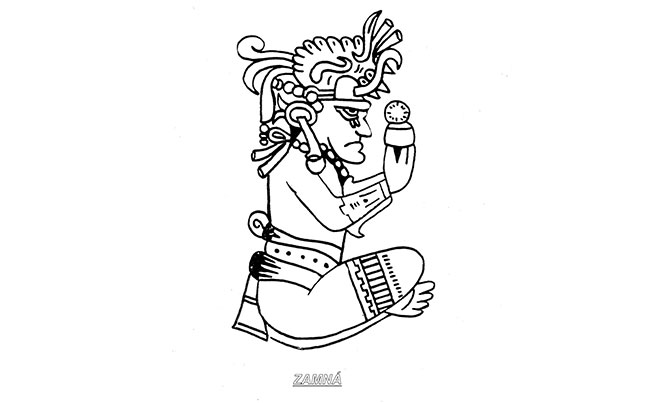Itzamná: God of Day and Night
Known as Zamná when he walked amongst the Maya, he is considered the cornerstone of the Maya´s economic strength

Very few deities enjoy the popularity and affection as Itzamná. Although he is no longer worshipped, the collective cultural memory holds a large spot for him in the hearts of all the modern Maya people.

Zamná, the man.
A group of pilgrims called the Itzaes arrived many centuries ago to the land today known as Izamal from the island of Cozumel. They were guided by a kind and wise priest called Zamná. Their task was to find the perfect land to build a city dedicated to their worship of water, and they found it. In 525 A.D. they built Chichen Itza. Chichen, meaning well and Itzá, their name, sorcerer of the water. For economical and cultural reasons, they started a pilgrimage throughout the Yucatan Peninsula and founded many cities, such as Ek Balam, Merida (originally named T’hó), Polé, Champoton and others, rapidly making Zamná, their guide, a rockstar. Stories about him became legends, and every step he took away from people who met him only made his fame greater until eventually, people started to worship him as a god…during his lifetime! Following his death, his followers elevated him to the rank of god, gave him the name Itzamná and officialized his worship.
Itzamná, the god.
A belief still held by Maya elders is that Zamná named all things; animals, cities and cenotes. In ancient times, Itzamná was associated with day and night. People believed he was a universal spirit of life who could make it collide with chaos to create living things. Therefore, many considered him the god of creation. The Maya represented rain through Itzamná and Chaac. Chaac allowed the water to fall, and Itzamná would create life also from the rain and with the help of his other friend, Kukulcan representing the sun.
Itzamná today.
Although nobody worships the god anymore, there is something in which both history and legends agree. It is because of him that the Maya economy, and therefore, the Maya culture were so great. He introduced the Maya to the henequén, a plant very similar to maguey, which was the base for the Yucatan economy up to the 20th century.








